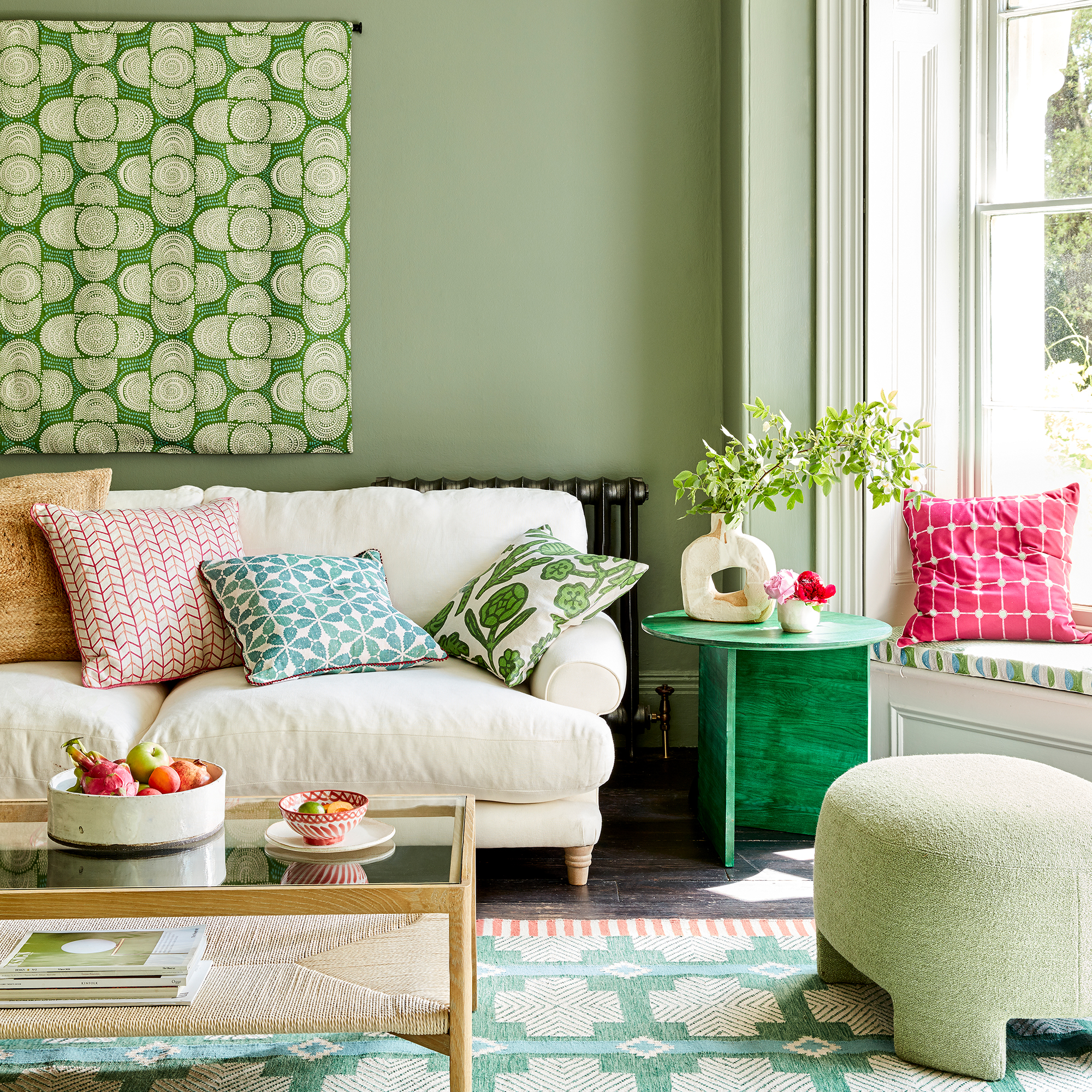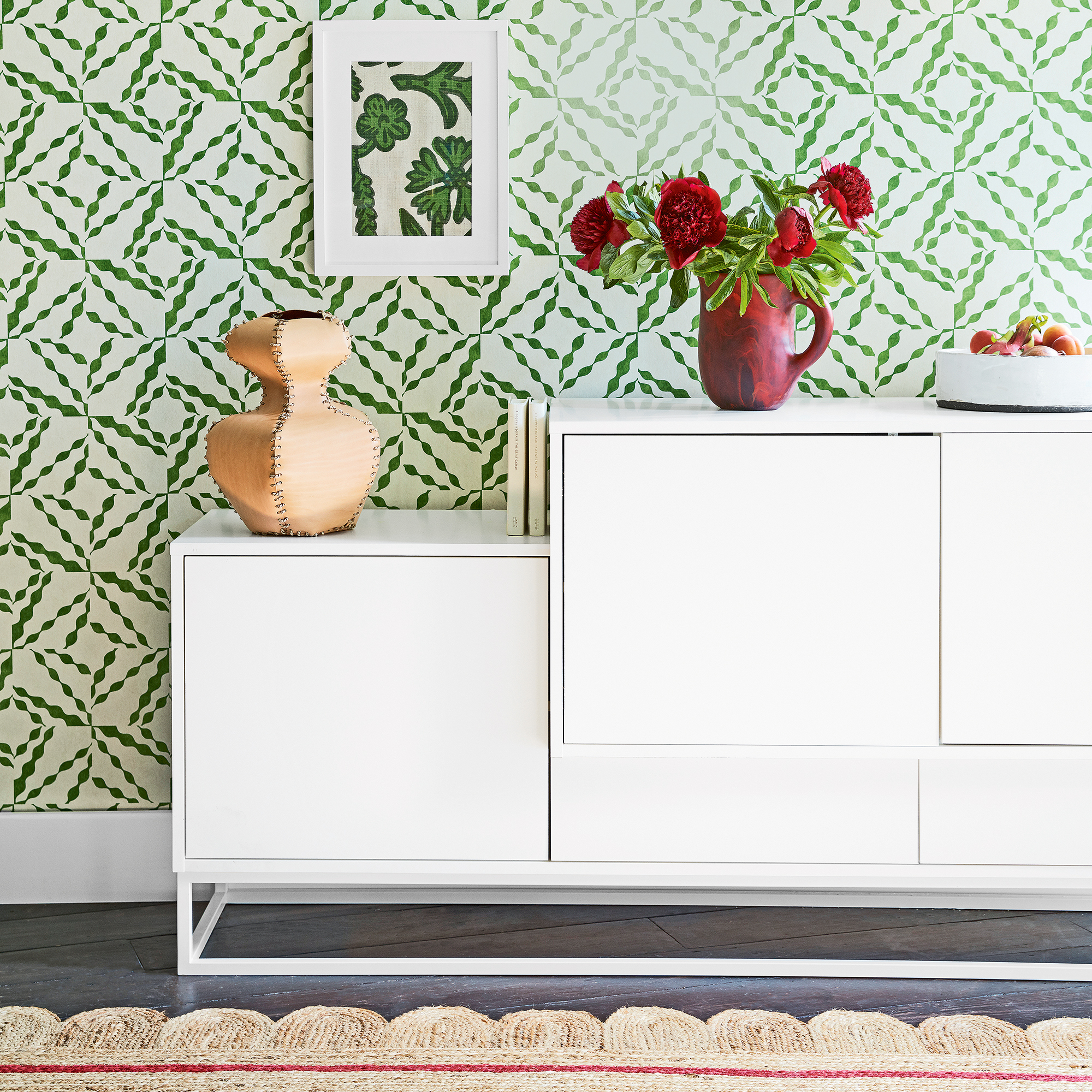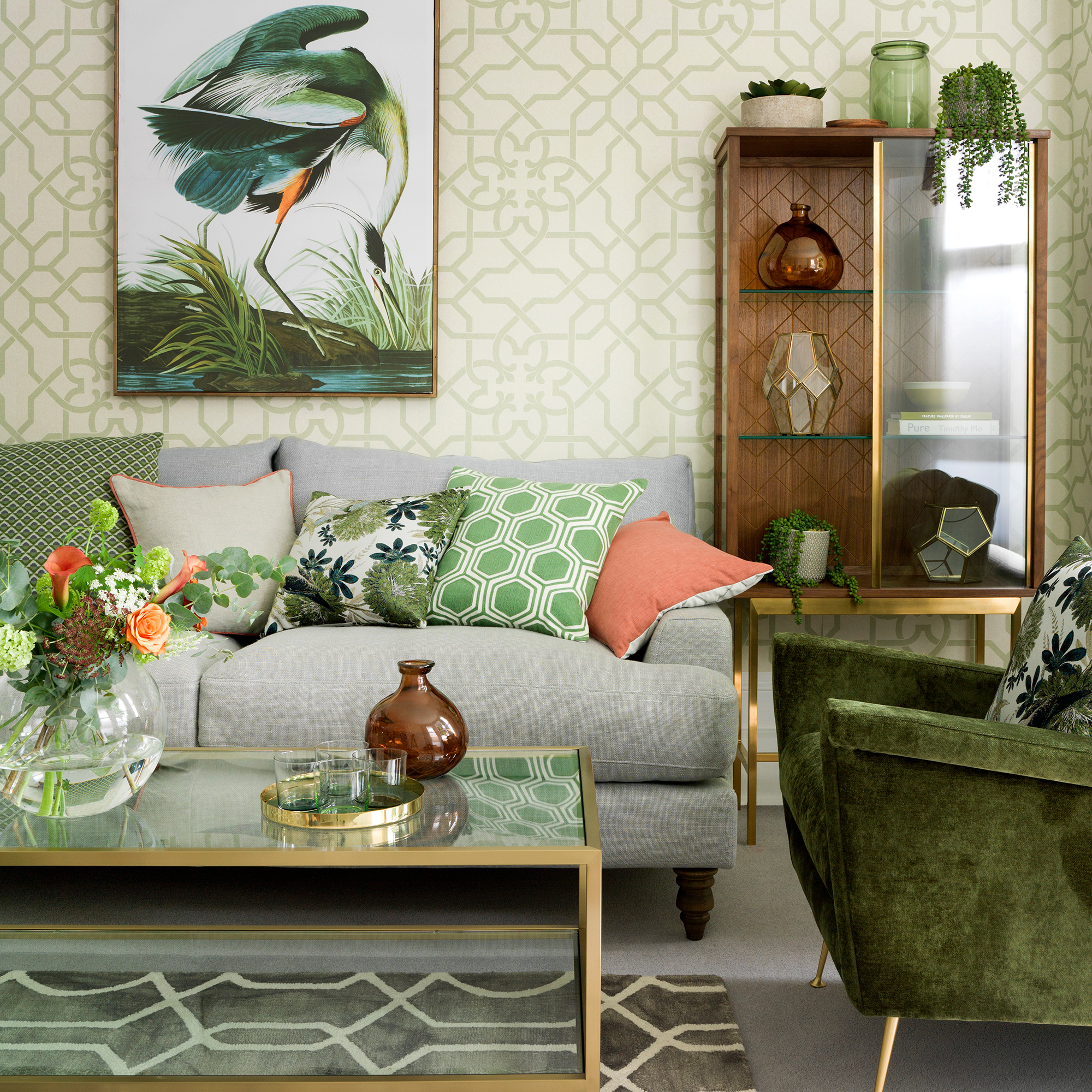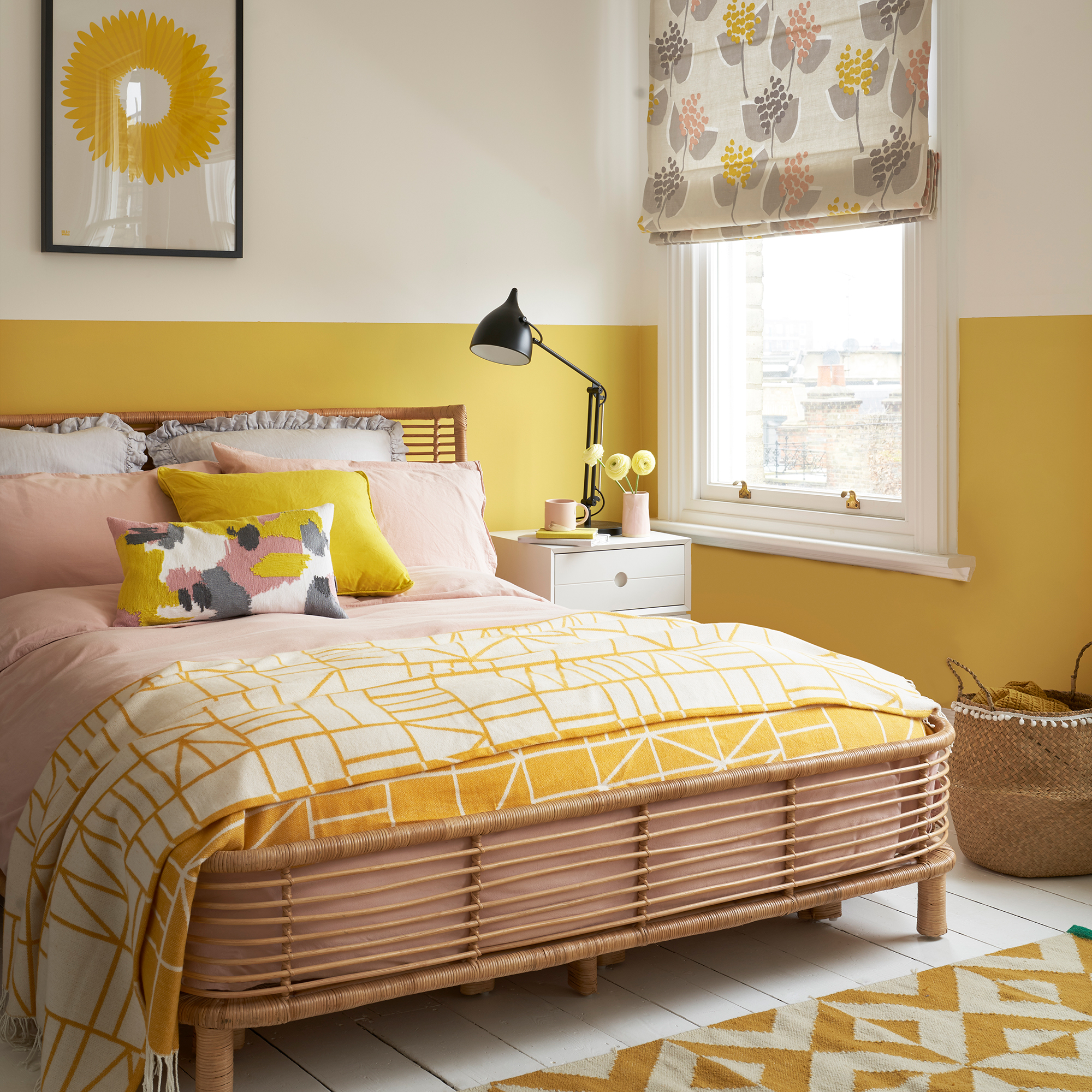
Pattern is a great way to inject some of your personality into a room as well as introduce colour and highlight specific features or pieces of furniture. There is no right or wrong but there are a few tips you can follow when thinking about pattern in interior design, that'll make the process of choosing and mixing pattern a whole lot easier.
Just like the best colour combinations, pattern works best if mixed and layered rather than just one in a scheme. The trick is to get the right balance of large and small designs so they are not competing. If you lack confidence doing this, look for fabric and wallpaper brands that produce collections where the designs already work together; there will often be one main print, then a series of complementary smaller prints or weaves in the same colour palette that you know are all going to sit well together.
Why is pattern important in a room?

Whether used wall-to-wall or more sparingly incorporating pattern in an interior design scheme will add depth and energise the space. It also helps to convey your design style; for example if you want to create a calming botanical inspired green bedroom then introducing a soft sage green leafy print wallpaper will set the scene instantly. Or if you want a contemporary monochrome look in your living room scheme, deciding on a black and neutral geometric print for the curtains could be a great starting point.
Pattern can also be used to highlight certain pieces or define areas with a space; a bold patterned living room rug idea makes a feature of the seating area in an open plan space, or fab floral fabric draws your eye towards the window in a bedroom scheme. Pattern also has the power to unify your scheme, bringing together colours and linking areas to zone an open plan space.
5 tips on how to use pattern in interior design
Forget about rules and have fun with pattern; big patterns can work in small spaces, think about using a large scale colourful wallpaper idea to transform a drab downstairs toilet into a talking point of your home; or use it in unexpected places like papering the ceiling of your child’s bedroom with a bold wide stripe.
No room is of limits, try tiling your bathroom with colourful geometric tiles to offset all the white sanitaryware, or reupholster your best sofa in an oversized floral velvet and team with a stripe rug.
1. Use pattern as a starting point

If you’re overwhelmed, and don't know where to begin when putting a new look together, choosing one pattern or design as a starting point to your scheme is a great first step. ‘Choose your favourite 'hero' print and build from there,’ says wallpaper and fabric designer, Imogen Heath, ‘adding plains and smaller prints in complementary colours to gradually build up the scheme.’
Your ‘hero’ print could be a wallpaper, a curtain or upholstery fabric, or even a patterned rug or floor tile you’ve totally fallen for.
2. Play with scale

Mixing patterns within one room will create a beautiful, layered look. For it to be a success you need a variety of small, mid and large-scale designs, used in varying quantities throughout the room so they don’t all compete against each other.
‘Overloading the space with the same scale print will make it feel overwhelming and busy, explains Imogen. ‘Choose a focal point in your room where you want your favourite pattern to shine and build and layer textures, colours, and patterns from there. We especially love bold patterns on curtains, upholstery, or wallpaper, but patterns can be added anywhere, from wall hangings to bed linen, rugs, and cushions.’
Also remember there is no rule to say that larger scale patterns should be used on larger pieces and smaller designs on smaller areas; an oversized floral fabric can transform a small ottoman, while a narrow stripe could add just the right amount of interest to full length curtains.
3. Curate your colour palette

One of the simplest ways to choose complementary patterns for a scheme is to stick to designs in the same colour family. So, for example if your hero print in a bedroom scheme is a blousy garden floral used on a headboard idea, you may pick out a green shade from the design and use this for a gingham for a bed throw, or smaller floral print at the window.
‘I don’t think there are any rules about how much pattern can be incorporated,’ says pattern loving designer, Clarissa Hulse, ‘but I do think sticking to a colour palette, and similar groups of colours, for example all earthy tones, or all jewel hues, stops a room looking confused.’
4. Create balance

You can sometimes have too much of a good thing and to really let your chosen patterns sing it’s important to keep some areas of the room plain, ‘this gives the scheme equilibrium and lets it "breathe," which will make the final look feel more polished,’ says John Smigielski, Marketing Director at Linwood.
An example is if you have striped pattern on the walls in a bedroom and have co-ordinated the wallpaper with a floral patterned curtain fabric you should choose plain linens for the bed but maybe throw on a couple of patterned cushions to link it together. Or in a living room you might have a patterned sofa idea and blind fabrics so then keep the walls a plain block of colour. Pattern has more impact when it has space to show off.
5. Think about where to use it
Nowhere is off limits when it comes to adding pattern to your home. Incorporating wallpaper into kitchen schemes is a trend that is becoming increasingly popular and bold patterned sofas as the focal point in a living room is a look we’re loving.
‘Patterns are also a great and effortless way to add a decorative element to a bedroom,’ says Hayley McAfee, Brand Manager at Villa Nova. ‘An upholstered headboard for example can give your bedroom a personal touch whilst also acting as a starting point for the rest of the room.’ Also don’t forget the more transient areas of your home, such as hallways, stairways and cloakrooms, these are spaces you can really have fun with bolder patterns in.
FAQs
What patterns go together in a room?
Some pattern in interior design just naturally looks good together; florals and botanicals look fab teamed with checks, stripes and smaller geometric weaves, Ikat prints pair really well will informal spots and small block print designs and for a more contemporary look try mixing a bold chevron with a smaller geometric print.
What patterns are in style right now?
Nature inspired biophilic designs bring a freshness to a scheme, look for oversized botanical murals as well as smaller leafy prints. These work well with bold chequerboard designs, this could be floor or wall tiles or an oversized rug.
We are also seeing lots of textured global-inspired patterns, block printed linens mixed with colourful woven kilim style stripes. These are a great way to introduce pattern to a more neutral living room scheme.
Learning how to use pattern in interior design is guaranteed to bring joy into your home, and the only limit is your imagination.







